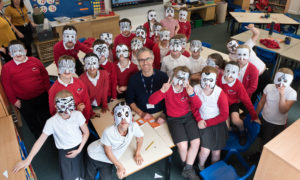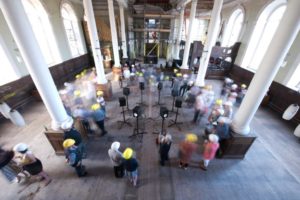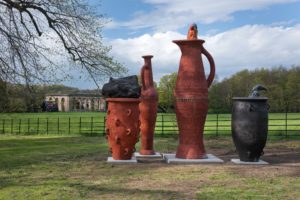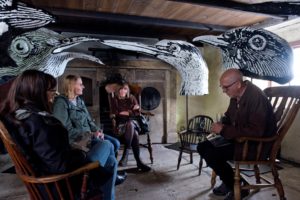Newcastle and Leeds Universities and external heritage partners, Arts&Heritage, The National Trust, Churches Conservation Trust, English Heritage, supported by Arts Council England and the Contemporary Visual Arts Network (CVAN).
January 2017 – December 2019
Multi-stakeholder, cross sector
Examination of the role and practice of temporary visual art commissioning within heritage properties in Britain today, mapping the current landscape and exploring the impact of this activity on its producers and audiences.
Facilitated through funding from Arts and Humanities Research Council (AHRC)
Through its varied research outputs – the commissioned artworks, research conference, website, the project exhibition – and working with our partners, our project has impact on three principle communities of interest: heritage site visitors; arts and heritage practitioners; and visual arts and heritage organisations, including UK funders and policy makers. Research will feed directly into the development of contemporary art in heritage practice, bringing new understandings of the commissioning process and the impact of site-specific temporary artworks on the heritage visitor experience
Public outputs from this research project include the production of six new commissioned artworks at heritage property sites in North East England in 2018-19, a major international conference on contemporary art in heritage practice and an exhibition at The Hatton Gallery in Newcastle in 2019. Other outputs include book chapters and series of forthcoming journal article publications.
The research highlighted the importance of adequate interpretation of artworks if their value is to be fully realised. Integrating heritage staff and property volunteers in the commissioning process is important as their enthusiasm and ‘buy in’ will be transmitted to public visitors and within the organisation. For artists, creating work for heritage sites can be an important strand in their professional practice and requires a creative approach distinct from other modes of production. Artists and heritage organisations may have different conceptualisations of ‘risk’ and this can be a barrier.
Further information can be found at https://research.ncl.ac.uk/mcahe/




Bringing together senior members of staff from public and non-government bodies to work collaboratively on strategic matters for the historic environment sector.